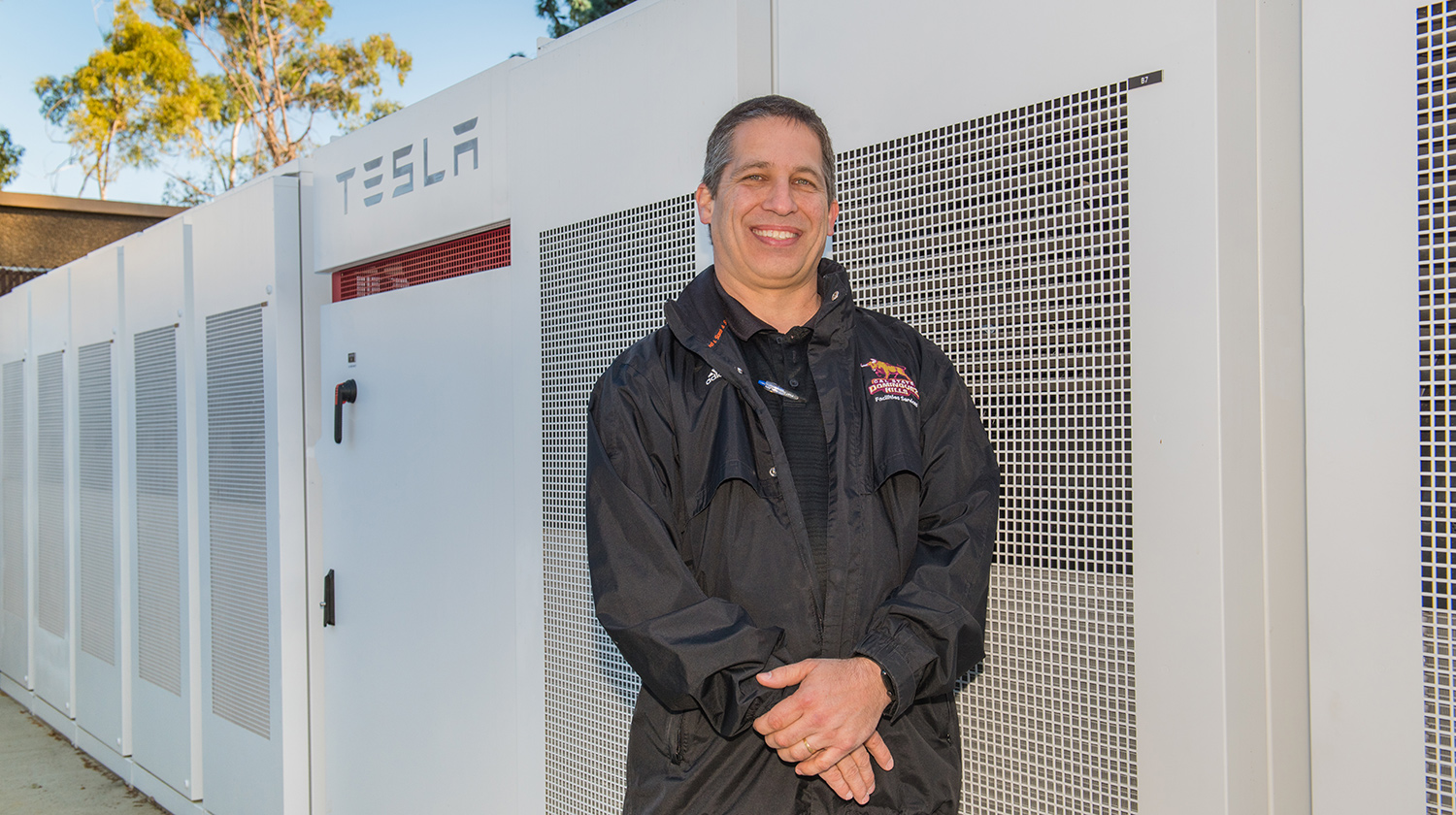
(Carson, CA) – California State University, Dominguez Hills (CSUDH) has been selected as one of two California State University (CSU) campuses in a new Clean Energy Optimization Pilot in partnership between Southern California Edison (SCE) and the CSU and University of California (UC) systems.
On April 25, the California Public Utilities Commission approved the four-year, $20 million pilot program that gives financial incentives to the CSU and UC to identify and apply sustainable actions to reduce greenhouse gas (GHG) emissions. CSUDH and California State Polytechnic University, Pomona will join five UC campuses and medical centers on the performance-based GHG reduction program.
“This is a wonderful opportunity for us to prove to the rest of the community what we can all achieve with the right support in the fight to combat global climate change,” said CSUDH’s Central Plant/Energy Manager Kenny Seeton. “It’s a great honor and responsibility to be chosen to provide proof of concept of the ways that we can all reduce our greenhouse gas footprint in our institutions.”
Funded through SCE’s GHG cap-and-trade allowance revenue, compensation for the campuses will be based on actual metered results, and success will be measured on GHG emissions avoided, rather than the standard method of measuring reduced energy use.
CSUDH received a framework of actions from the CSU Office of the Chancellor to help meet specific GHG reduction goals. The action items include the implementation of LED lighting and controls, replacing assets that use fossil fuels, increasing solar energy generation and electricity storage capacity, installing electric vehicle charging stations and other ways to power electric transportation, and creating programs that help develop an energy-reduction mindset across campus.
CSUDH has made it a priority to implement innovative projects in an effort to help California meet its 2030 GHG targets and has already made significant progress in addressing the action items. The pilot program will help expand the reach and breadth of these efforts, which include but are not limited to the following:
- In 2018, CSUDH became the first to participate in an innovative load relief program that combines artificial intelligence (AI)-energy storage and demand response. The energy storage system consists of 20 large Tesla battery banks to reduce its impact on the local power grid and make the campus more sustainable.
- The university is phasing in HVAC upgrades that are solar powered, resulting in a zero-dollar electricity bill under the auspices of the pilot program.
- CSUDH is upgrading its central plant chillers from natural gas to all-electric models and replacing the outdated boiler with a more efficient model to support new building projects.
- The university is expanding its solar power capacity and has Requests for Proposals out for the installation of additional rooftop solar arrays on several buildings.
- The campus has installed more energy efficient interior and exterior Enlighted controls and LED lighting in certain areas of campus and would expand the project under the pilot program.
- Electric vehicle charging stations are provided on campus for faculty, staff, and students.
- During Race to Reduce Month in March, CSUDH hosts an annual energy-reducing competition for those who live in campus housing, and will expand the competition to the upcoming fall semester.
California is already feeling the adverse effects of climate change. If the world continues to warm at this rate, Californians can expect extreme droughts, wildfires, rain and flooding to become more common. CSUDH’s and the other partners’ participation in the pilot represent a major step in creating repeatable solutions to counter climate change.
“In addition to a commitment to integrate sustainability into the academic curriculum, CSU has a long-standing history of pursuing sustainable practices in all areas of the university,” said Aaron Klemm, CSU’s chief of energy and sustainability. “This partnership will open up new pathways for our university to act on the climate emergency.”